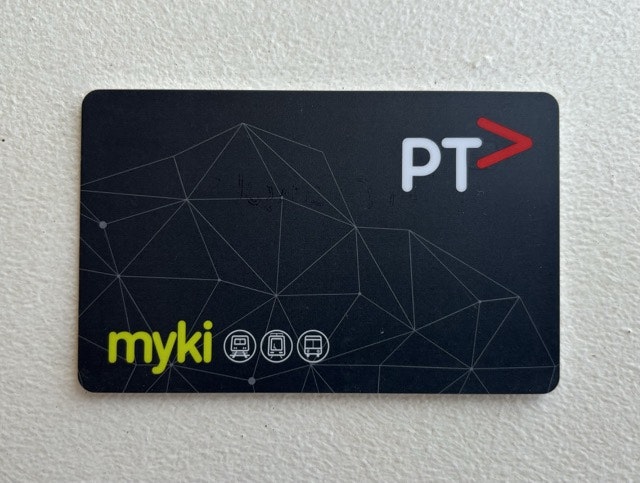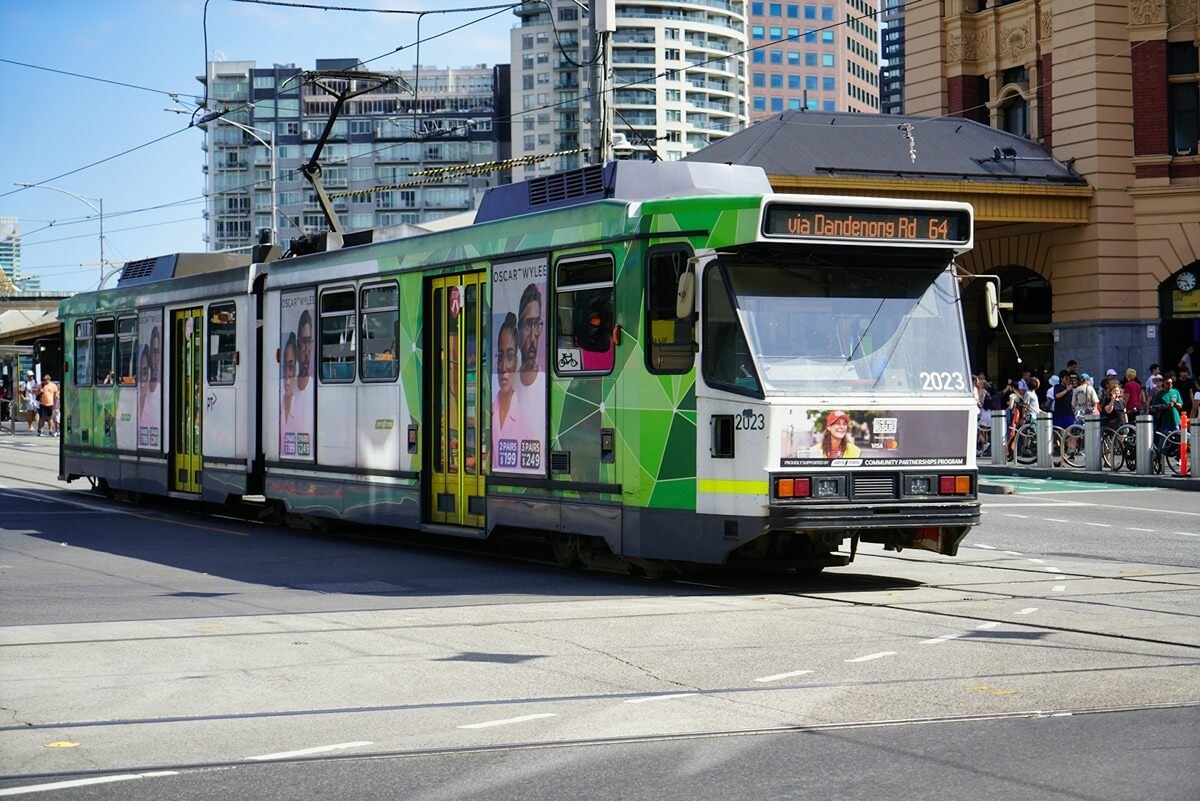The complete guide to Melbourne's public transport system
Everything you ever needed to know about the public transport network of Melbourne - whether you're new to the city or a long time resident.

By:
LINA AVILA HENAO
Last Updated:
Dec 16, 2024
Tags:
#daily-life #transport
Today we are going to cover all the info about Melbourne’s public transport network. Trains, buses, trams, tickets, prices - its all in here.
In our opinion, Melbourne has the best public transport system of any city in Australia! However, it can be very confusing when you first arrive, and even long time residents often make mistakes - especially with the ticketing system. The good news though is that once you know the tricks, its a super easy system to use day to day.
Today we will cover:
The types of transport in the network
The ‘Myki’ ticketing system - how to use it, and how to make sure you don’t overpay for what you need
Tips and tricks only the locals know!
So let’s get started!
The Basics
The public transport system of Melbourne is quite extensive, and between its vehicle types covers a huge area.
The metro Melbourne transport network is made up of three key vehicle types - trains, trams, and buses. Each overlap quite heavily, and your trip will often make use of multiple parts.
The network shares a single ticketing system called Myki. Its an electronic system that handles all the ticket and transport types (more on that below), and works by ‘tapping on’ on the digital devices at the entrance to the vehicle or station.
Lets take a close look at the Myki.
Ticketing
So first things first - how do we get a ticket to use the network. Victoria stopped using paper tickets in around 2012, and moved everyone (even tourists) on to the smartcard based system called Myki. Using this card, you key on and off when using each of the transport options by tapping the card on the device at the entrance of the vehicle.

You can load money to your Myki for transport in two different ways - Myki Money and Myki Pass.
With Myki Money, you add credit to the card and use it up on a pay-per trip basis. The details of what each trip costs are as follows:
| Fare type (2hr) | Zone 1 + 2 | Zone 2 only |
|---|---|---|
| Full fare | $5.30 | $3.30 |
| Concession | $2.65 | $1.65 |
| Fare type (daily) | Zone 1 + 2 | Zone 2 only |
|---|---|---|
| Full fare | $10.60 | $6.60 |
| Concession | $5.30 | $3.30 |
Some key things to remember when using this method are:
You must have credit loaded to your card before you travel - if you try to key on without credit, it will not activate and you may get a fine.
You are charged per trip, which gives you a 2-hr window to travel. You still must key on to every new vehicle if you change (ie bus to tram, change between trams), but the system will know its only 1 trip if its in the 2-hr period.
There is a maximum charge per day, which is equivalent to 2x trips. After that you must still key on, but your card wont be charged any more that the maximum.
With Myki Pass, you prepay for unlimited travel over a set period of time. You can pay for a week (7 days), or a period of anywhere between 28-365 days. There are big discounts for longer passes, and if you end up leaving before the pass is finished you can apply for a refund.
If you have a valid Pass, then tapping on will use this before taking any credit from your Money account. But be careful - your Pass will not be valid to use if you have a negative value in your Money account.
Now let’s have a closer look at each of the types of travel.
Trains

Best for: Moving between suburbs, getting into the city quickly.
Watch out for: Delays or closed lines due to improvement work, infrequent on some lines outside of peak hour
Trains are the main way of getting into and out of the city centre, and between suburbs. Relatively fast (compared to the other types at least…) and reliable, the trains are how most people start their journey on the network.
Most of the time you tap on through the gate at the entrance to the station, and technically you are considered ‘on the transport’ from a ticketing perspective as soon as you are within the station (not just on the train).
Be careful of making sure to tap on at those stations that dont use gates - you may get fined, and wont be able to get out through the gates at the other end of your trip.
Trams

Best for: Moving around within the CBD, getting from a station to a final destination, getting to locations without a station
Watch out for: Delays because of traffic jams, very crowded in peak hour
Melbourne is famous for its trams, and they cover central and inner Melbourne extensively as well as extending out into some suburbs that don’t have good access to trains.
Buses

Best for: Getting to areas not covered by trains or trams
Watch out for: No way to track, driver sometimes won’t stop unless you wave, slow
Buses generally only used to get to/from areas that don’t have close access to a train or tram. You tap on at the entrance to the bus similar to the trams above, and for this reason should always get on through the front doors of the bus.
They fill a valuable role, but are prone to large delays due to traffic, and some readers have had experience with drivers ignoring them waiting at the stop and driving past. Also, they lack the tracking that you can get from Tramtracker app for trams, so you can often be waiting in the rain for ages without knowing when the bus is going to arrive.
Ideally, try to avoid using them unless you have to.
Tips and Tricks
Use the free tram zone inside the CBD like a local
Within the boundaries of the CBD, all of the trams are free (even ones that then continue outside the centre). When using the trams within this boundary, you do not need to tap on with your myki - you can just get on or off as you like.

Don't key off on trams and buses
When leaving a tram, its not required to key off when you leave the tram. Blocking the exit of a busy tram in peak hour is a good way to annoy the regulars!
The only exception to this rule is if you are travelling within zone 2 only - in this situation you should key off to make sure you are only charged the cheaper rate.
Download the PTV & TramTracker apps
Both of these apps are essential for every Melbourne resident!
The PTV App (iOS | Android) is used for journey planning. Just add in your starting point and destination station, and it will tell you which trains to catch and where to change for the fastest journey. Very helpful to understand the the transfer stations, and also to avoid the (frequent) line closures on weekends and night for improvement works. It will also allow you to top up your Myki and see your balance through the app.
Tramtracker (iOS | Android) is specifically for seeing how far away the next tram is. Because the trams often share the roads with cars, they can sometimes get very heavily delayed. Tramtracker will tell you in real-time exactly where the next 3 trams are, which lets you know whether you need to run to catch it (or change your plans if it’s a long way away!).
Double check which way you are pointing!
Lina's experience
This one might sound silly, but every day you will see tourists and even some residents mistakenly get on a tram going in the wrong direction and have to get off again at the next stop (looking a little embarrassed)! Normally the stops to wait for the tram are opposite each other, but the trams can take very winding routes through the cities so the direction of the tram might not be the direction of its final destination. Always be very careful and double check the name on the front of the tram - it should be the name of the final stop in the direction you are travelling. I personally was late a few times falling for this one!
Get your concession card
If you are eligible then one of the first things you should do is get your concession Myki sorted, which entitles you to half price travel on the network. There are a number of different concessions, but the most relevant one for our readers will be either the:
International Student Travel Pass - for international students studying full time in a Diploma, Advanced Diploma, or University Undergrad level course. 90-day, 180-day, and 365-day passes are available, and they have the added bonus of covering State-wide travel (not just metro Melbourne!)
Student Concession - If you’re a Citizen, permanent resident, asylum seeker, or exchange student and studying full time then you may also be eligible for a Tertiary Concession. In these cases, its best to double check with your educational institute for whether you are eligible and for next steps.
Unfortunately, students here to study language courses or that are studying part-time are likely not eligible for any concession, but its always worth asking your school if they have any offers.
Watch out for inspectors!
The PTV has a lot of inspectors on the system trying to catch people that haven’t tapped on. They are mostly on trams, but also sometimes on trains too, and can be wearing uniforms or be undercover in normal clothes.
They will wait until the doors close, then show their identification and move through the whole tram to check everyone’s Mykis on special devices. If you haven’t got a valid trip then they will issue you with a fine. Watch out!
In Conclusion
Navigating Melbourne’s transport system can be complicated, but it is just a matter of practice. It may seem daunting at first, but after less than a month in Melbourne you will be an expert in all modes of transport.


